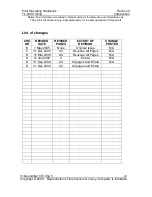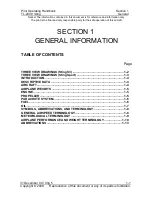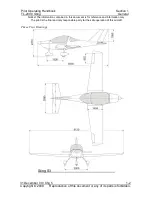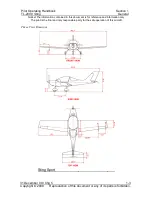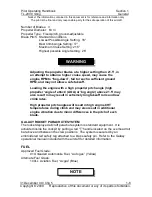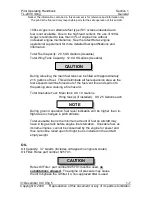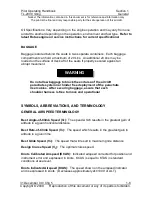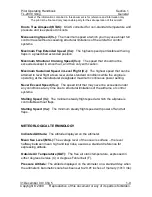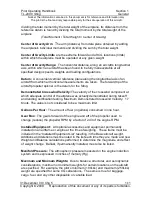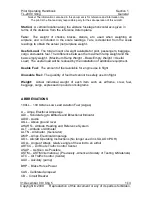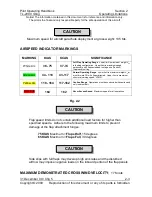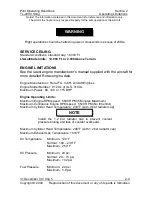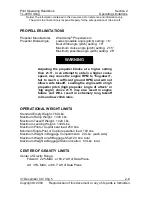
Pilot Operating Handbook
Section 1
TL-2000
Sting
General
Notice! The information contained in this document is for reference and information only.
The pilot is the final and only responsible party for the safe operation of this aircraft.
31 December 09 / Chg 5
1-13
Copyright © 2009 Reproduction of this document or any of its parts is forbidden.
Station:
A vertical location along the airplane fuselage horizontal axis given in
terms of the distance from the reference datum plane.
Tare:
The weight of chocks, blocks, stands, etc. used when weighing an
airplane, and is included in the scale readings. Tare is deducted from the scale
readings to obtain the actual (net) airplane weight.
Useful Load:
The total amount of weight available for pilot, passengers, baggage,
cargo and usable fuel. The difference between the maximum ramp weight and the
basic empty weight. (Maximum Ramp Weight – Basic Empty Weight = Useful
Load) The useful load will be reduced by the installation of additional equipment.
Usable Fuel:
The amount of fuel available for engine use in flight.
Unusable Fuel:
The quantity of fuel that cannot be safely used in flight.
Weight:
Actual individual weight of each item such as airframe, crew, fuel,
baggage, cargo, expressed in pounds or kilograms
ABBREVIATIONS
100LL – 100 Octane Low Lead Aviation Fuel (Avgas)
A – Amps, Electrical Amperage
ADI – Solid state gyro
A
ttitude and
D
irectional
I
ndicator
ADIO - Audio
AGL – Above ground level
AHARS – Attitude Heading and Reference System
ALT – Altitude or Altimeter
ALTN – Alternator, (Generator)
AMP – Amps, Electrical Amperage
AOI – Aircraft Operating Instructions (No longer used in LSA, AOI=POH)
AOA – Angle of Attack, relative angle of the wind to an airfoil
ARTCC – Air Route Traffic Control Center
ASAP – As Soon As Possible
ASTM – ASTM International, (Previously -American Society of Testing & Materials)
ATC – Air Traffic Control (Center)
AUX – Auxiliary (pump)
BHP – Brake Horse Power
CAS - Calibrated airspeed
CB – Circuit Breaker

